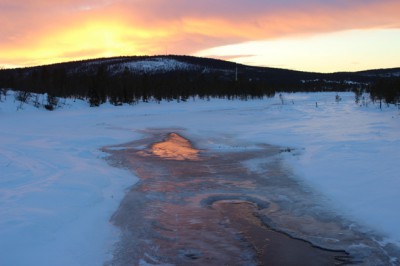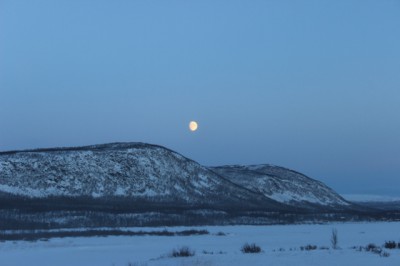We went out in the bright low sunlight a few days ago and I took lots of photos. They’re amazing (do you want to see them?). The vivid red bands in the sky, the orange paint washes spreading over snow-covered hills.
Now we have some daylight our excursions are always around that time. We go out to see the colours thrown up along the horizon, the candle effects shooting up from the sun into the sky, the ice crystals in the sunrise.

It’s impossible to resist taking photographs, and if you can find a bit of running water (rare here in the winter – you need to know where to find a very narrow passage in a wide flowing river), and if you can catch the sky’s reflection too – that’s the jackpot.
At this time of year our guests are excited by the amazing shots of the sun and the sky they’ve caught on their phones. I don’t like to dampen their enthusiasm but I’ve seen it all before. I take hundreds of them, every year, and every one of them’s a winner. It isn’t hard.
Then each day, after these spectacular scenes, the long hours of twilight return, and I really don’t mind. I’m used to it. Everything comes down a notch, retreats a bit, becomes a bit more mysterious. You see, but not so well. Daylight is a torch shining on the world and, most of the time you just don’t need it.
Perhaps I’d be a sort of slow, white slug, living in perpetual half-light. But too much light, too much stimulation, can make us stressed, anxious, over-active, and in need of ‘mindfulness’ courses to calm down. This time of year is almost perfect; an hour or so a day of seeing the sun is enough, I find, and then the blue twilight washes around me the rest of the day like soft amniotic fluid.
After our trip out the other day the sun had sunk completely before we began our homeward journey.
I looked back at the sky and took one last shot.
The landscape’s shapes were marked out in soft grey tones, and the moon hung low over a blue whale-shaped mountain.


